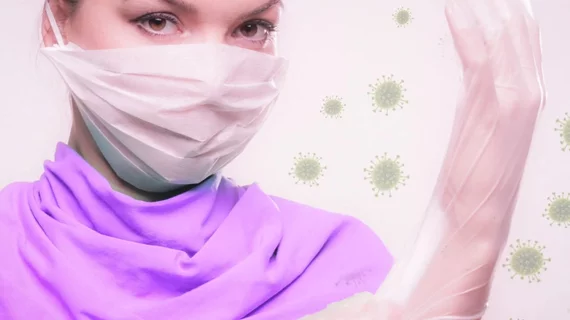Singapore saw its first confirmed case of COVID-19 back on January 23. By early February, the urban island nation had the second highest case count outside of China. Now two radiologists and an infectious-disease specialist there are sharing what they’ve learned.
Radiology services encountering the coronavirus disease-19 pandemic “will need to modify their daily operational practices,” Robert Chun Chen, MD, and colleagues write to introduce their opinion piece, which European Radiology published online April 23.
The three, all of whom work at 1,700-bed Singapore General Hospital, present their specific recommendations as five key operational principles for safely and sustainably dealing with the pandemic.
1. Leadership. Noting that a dedicated communications effort is crucial to managing any sort of public-health crisis, the authors describe their early move summoning a small radiology task force. Members included not only rads but also techs, nurses and administrative staff. Among its duties were reviewing operational capacity daily and serving as a contact point for the hospital’s broader COVID task force.
“Several modes of direct communication between the task force and the ground staff were immediately created via instant messaging applications and email, allowing real-time clarifications and dissemination of information for speedy action,” Chen and co-authors write.
2. Patient risk stratification. Triaging, categorizing and segregating patients by relative degree of severity risk remains a must to the present day, the authors point out. They note that this step was quite easy when the outbreak was new: Simply identify symptomatic patients who’d recently traveled to China’s Hubei Province and healthcare workers who’d treated Chinese tourists visiting Singapore.
“With the recent global explosion of cases in Europe and America with known community spread, it is becoming more challenging to categorize patients into different risk categories,” Chen and colleagues write. “There may be a time in the near future when anybody coming into the radiology division may well be a possible COVID-19 case, and sustainable enhanced universal precautions are likely to become the ‘new normal.’”
3. Adequate manpower. The leadership of Singapore General’s radiology department reluctantly but decisively came to accept that they’d need to disappoint staff by indefinitely postponing scheduled time off. This would be necessary, they recognized, to make sure all hands were on deck during the crisis. They also broke into small functional teams so that, in case of a quarantine taking a staff member out of the mix, another team (or two) could carry on providing adequate service levels. “
“Splitting into smaller subunits admittedly has taken a toll on some of staff,” Chen and co-authors write. “Even prior to the COVID-19 outbreak, we were generally short staffed of [technologists], and their longer 12-hour shifts during this outbreak has [presented] a challenge.”
4. Operational workflow clarity. From the start of the outbreak, Singapore General’s radiology department has been working on minimizing unnecessary imaging of COVID patients—suspected or confirmed—so as to cut off infection pathways. At the same time, department leaders remain aware that lab tests aren’t always sensitive enough to rule the virus out. Many patients, the authors explain, need imaging before it’s known whether or not they’re carrying the pathogen. To reduce risks in these cases, the department is using portable imaging options where feasible, along with carefully planned transport routes, full PPE, negative-pressure CT and MRI rooms and other measures.
For patients in whom COVID is not suspected, the department simply maintains its standard operating procedures for avoiding hospital-acquired infections.
“Strict hand hygiene practices are already part of our normal pre-pandemic routine; our only additional measure is that all our patient-fronting staff wear surgical masks,” the authors write. “Our daily throughput for this group of patients has not been affected.”
5. Workplace and social responsibility. As normal safety measures, Singapore General’s radiology department makes use of posters, videos and intranet messages on hand hygiene and PPE. To these it’s added instructing sick staff members to stay home and avoid social activities. The department has also instituted mandatory temperature reporting over a secure weblink—twice a day, seven days a week for all staff members—using a hospital-issued thermometer.
“As the COVID-19 situation continues to evolve, we will continue to persevere and hope that the concepts we have introduced will allow us to contain and nimbly adapt to the situation as it unfolds,” Chen et al. conclude. “It is possible that this pandemic may be a new normative state, and we may have to develop new infection control standards such that operations can continue with minimal risk to staff and patients.”
The journal has posted the paper in full for free.

